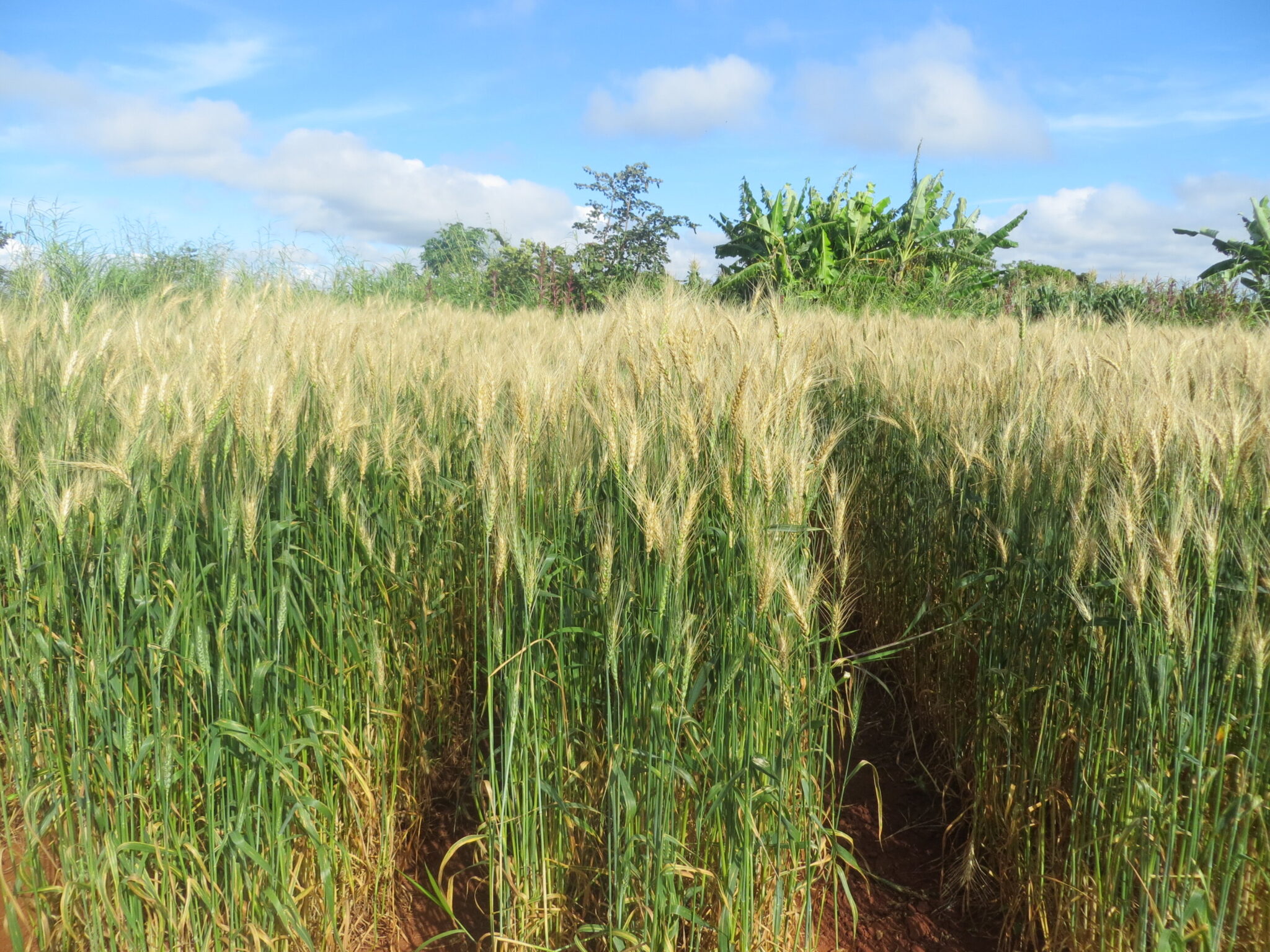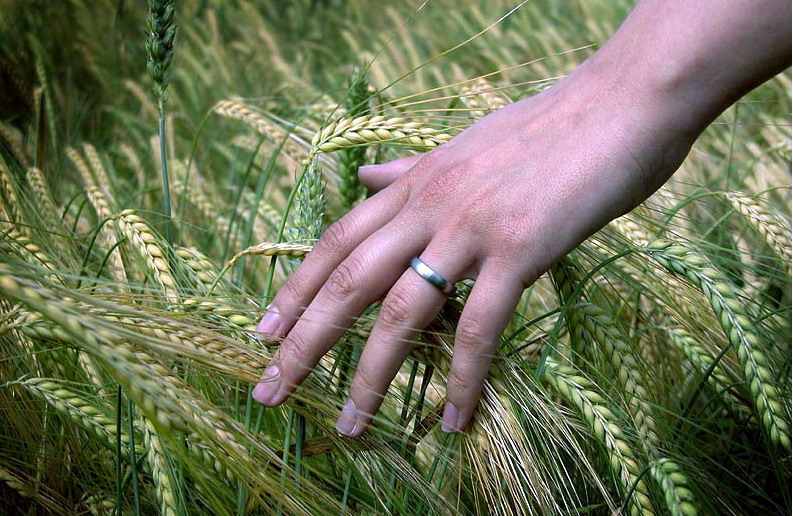Genomics opens the way for scientists to track where and which plants are affected most by rapidly spreading pathogens.
By Rachel Calder
The COVID-19 pandemic made many of us aware of how genomics can be used for tracking human diseases. Genomics is a field of molecular biology that studies the genetic information of organisms. Behind the all-too-frequent news headlines announcing a new “variant of concern” lay global efforts to identify genetic changes in the virus and determine whether these were linked to altered severity or transmissibility of the disease. Pathogens, like any living organism, may undergo spontaneous genetic mutations—changes in their DNA code (or RNA, in the case of some viruses). If these mutations happen to improve that pathogen’s ability to survive and reproduce, then natural selection will promote their spread through the population. From our point of view, mutations that make a pathogen better able to survive and reproduce also make it more dangerous. Fortunately, genomics offers us some means of defense. Genomic tools and techniques have advanced rapidly in recent years, and are routinely applied to monitor the evolution of certain human pathogens in order to guide public health measures.
RELATED: Biotech & Digital Agriculture: The Smart Farming Revolution
Plants, too, face pathogens, including those with pandemic potential. This is of particular concern when crop plants are affected, as disease-related yield losses place additional strain on a food system already challenged by climate change and population growth. One such plant pathogen is the fungus Magnaporthe oryzae, a subtype of which is responsible for the disease known as wheat blast. Though the severity of infection varies, wheat blast can drastically reduce both the quality and quantity of wheat grain: yield losses up to 100 percent have been reported. Another subtype of Magnaporthe oryzae causes the more widespread disease rice blast, and this has received considerably more attention than its wheat-infecting cousin. Yet given that wheat is estimated to supply around 20 percent of calories consumed by humans globally (the proportion being considerably higher in some regions), wheat blast poses a substantial threat to food security and also deserves close scrutiny.
An international team of scientists is aiming to do just that, and they have used genomic approaches similar to those employed for tracking human diseases. By studying the DNA of the wheat blast pathogen in samples from different locations, they have been able to trace the spread of one particular lineage from its apparent origin in South America to Bangladesh and Zambia. Knowledge of the genetic make-up of this particular “pandemic lineage” equips us to tackle it more effectively. Deciphering the genome of the pathogen enables scientists to predict which wheat genes might help the plant resist the disease, which fungicides might kill the pathogen, and how it might evolve in the future.
Tracking the spread: genomic detective work
Wheat blast has been known in South America since 1985, but its appearance in other tropical/subtropical areas is much more recent. A 2016 outbreak in Bangladesh was followed two years later by one in Zambia, and large areas of the world are thought to be potentially vulnerable to the disease or likely to become vulnerable under anticipated climate change.
One of the achievements reported in a recent paper on genomic surveillance of wheat blast was to establish where the Bangladeshi and Zambian outbreaks came from. Sergio Latorre at University College London and a team of global researchers used sophisticated data science techniques to compare the genetic material of a large number of wheat blast fungus samples from across the different regions in which it has occurred. Whereas considerable genetic diversity was found to exist among the various South American samples, all the Bangladeshi and Zambian samples were found to be highly similar both to one another and to one particular South American isolate, labelled “B71.” This implies that the South American B71 lineage was the original source of both overseas outbreaks, having been separately introduced to Bangladesh and Zambia. Further tests for particular patterns of genetic change over time within the B71 cluster across all three continents substantiated the researchers’ hypothesis that the lineage is clonal. This means it has been reproducing asexually and therefore retaining more or less identical genetic information (barring mutations) from one generation to the next.
Treating the disease: insights from genomics
The researchers go on to outline in their paper how genomics can inform strategies for tackling wheat blast. Knowing that separate outbreaks are derived from the same pathogen lineage is in itself valuable, as it suggests that similar control measures might be effective in each case. Further analysis of the pathogen’s genome can then illuminate precisely which control measures are likely to be effective.
Crop breeding for disease resistance is one approach to fighting plant pathogens. Given the substantial investments of time and money required for breeding programs, scientists want to maximize the chances of success by improving our understanding of the mechanisms underlying resistance and which genes are involved. In interactions between plants and their pathogens, pathogenicity and immunity are mediated by “effector proteins” secreted by the pathogen. A successful plant pathogen uses these proteins to infect its host. However, plants with resistance to a particular disease recognize its specific effector proteins and mount an immune response to them. Just as not all pathogens of a given species will carry exactly the same effector genes, not all plants of a given species will carry exactly the same resistance/susceptibility genes. This provides the raw material for evolution: the plants are under selection pressure to develop resistance, and the pathogens are under selection pressure to circumvent that resistance through altered effectors that do not trigger plant defenses.
The researchers used genomic analysis of the B71 wheat blast fungus isolates to determine which effectors this particular lineage of the pathogen could produce. All the B71 isolates were found to carry the gene for an effector called AVR-Rmg8. The corresponding wheat gene Rmg8 is known to confer resistance against pathogens secreting this effector. Although variants of the AVR-Rmg8 gene exist that can overcome plant immunity, none of these more dangerous versions were found in the B71 isolates. The implication is that breeding wheat with the Rmg8 resistance gene and/or promoting the use of existing varieties possessing this gene would be a sound strategy to address the pandemic lineage of wheat blast that has spread beyond South America. The researchers validated this conclusion with an experiment in which they deliberately introduced B71 wheat blast fungus isolates from Zambia and Bangladesh to wheat plants with and without the Rmg8 gene. As expected, the B71 isolates were not able to cause serious damage to any of the Rmg8-carrying wheat plants.
Farmers frequently resort to fungicides as an emergency measure to counter the spread of wheat blast, but this is not always successful as pathogens can evolve to resist the fungicides. Another piece of good news reported by this study was that none of the B71 isolates sourced from Zambia and Bangladesh carried the genetic mutation associated with resistance to the commonly-used strobilurin group of fungicides. Researchers exposed the relevant isolates to strobilurins; all the B71 isolates from outside of South America were found to be susceptible.
Forecasting the future
The research paper ends on a note of caution. Though the B71 pandemic lineage of wheat blast is at present impotent against Rmg8-derived wheat immunity and strobilurin fungicides, there are reasons to believe that this situation might change in the future. Firstly, mutations conferring strobilurin resistance occurred during laboratory experiments, suggesting that they are likely to arise also in nature. Furthermore, the wheat blast fungus can reproduce either asexually or sexually; sexual reproduction offers opportunities for the exchange of genetic information and may thus accelerate evolution. Sexual reproduction in fungi is complicated: rather than simply having two sexes, some fungal species have a large number of “mating types” with differing compatibilities. The researchers used genomics techniques to determine that the mating type of the B71 lineage would enable it to breed with another kind of blast fungus found in African finger millet. Now that the B71 pathogen has spread to Zambia, sexual reproduction with these native fungal lineages is likely to facilitate the evolution of more dangerous variants.
As the researchers conclude, these threats make genomic surveillance of the wheat blast pathogen all the more important. For wheat blast as for COVID-19, genomics has the potential both to help identify “variants of concern” at the earliest possible opportunity and to inform our responses to those variants.
This study was published in the journal PLOS Biology.
References
Latorre, S. M., Were, V. M., Foster, A. J., Langner, T., Malmgren, A., Harant, A., . . . Kamoun, S. (2023). Genomic surveillance uncovers a pandemic clonal lineage of the wheat blast fungus. PLOS Biology, 21(4), e3002052. https://doi.org/10.1371/journal.pbio.3002052
Ling-Hu, T., Rios-Guzman, E., Lorenzo-Redondo, R., Ozer, E. A., & Hultquist, J. F. (2022). Challenges and opportunities for global genomic surveillance strategies in the COVID-19 era. Viruses, 14(11), 2532. https://doi.org/10.3390/v14112532
Ristaino, J. B., Anderson, P. K., Bebber, D. P., Brauman, K. A., Cunniffe, N. J., Fedoroff, N. V., . . . Wei, Q. (2021). The persistent threat of emerging plant disease pandemics to global food security. Proceedings of the National Academy of Sciences, 118(23), e2022239118. https://doi.org/10.1073/pnas.202223911
Singh, P. K., Gahtyari, N. C., Roy, C., Roy, K. K., He, X., Tembo, B., . . . Chawade, A. (2021). Wheat blast: a disease spreading by intercontinental jumps and its management strategies. Frontiers in Plant Science, 12, 710707. https://doi.org/10.3389/fpls.2021.710707
Image credit: Batiseba Tembo, Zambia Agriculture Research Institute; license CC by 4.0
About the Author
Rachel Calder will soon be embarking on a PhD studying mycorrhizal fungi in woodland, but is also an inveterate dabbler with a wide enthusiasm for all things Science. Having started out studying history herself, she’s also a big advocate for transcending the arts/sciences divide.




